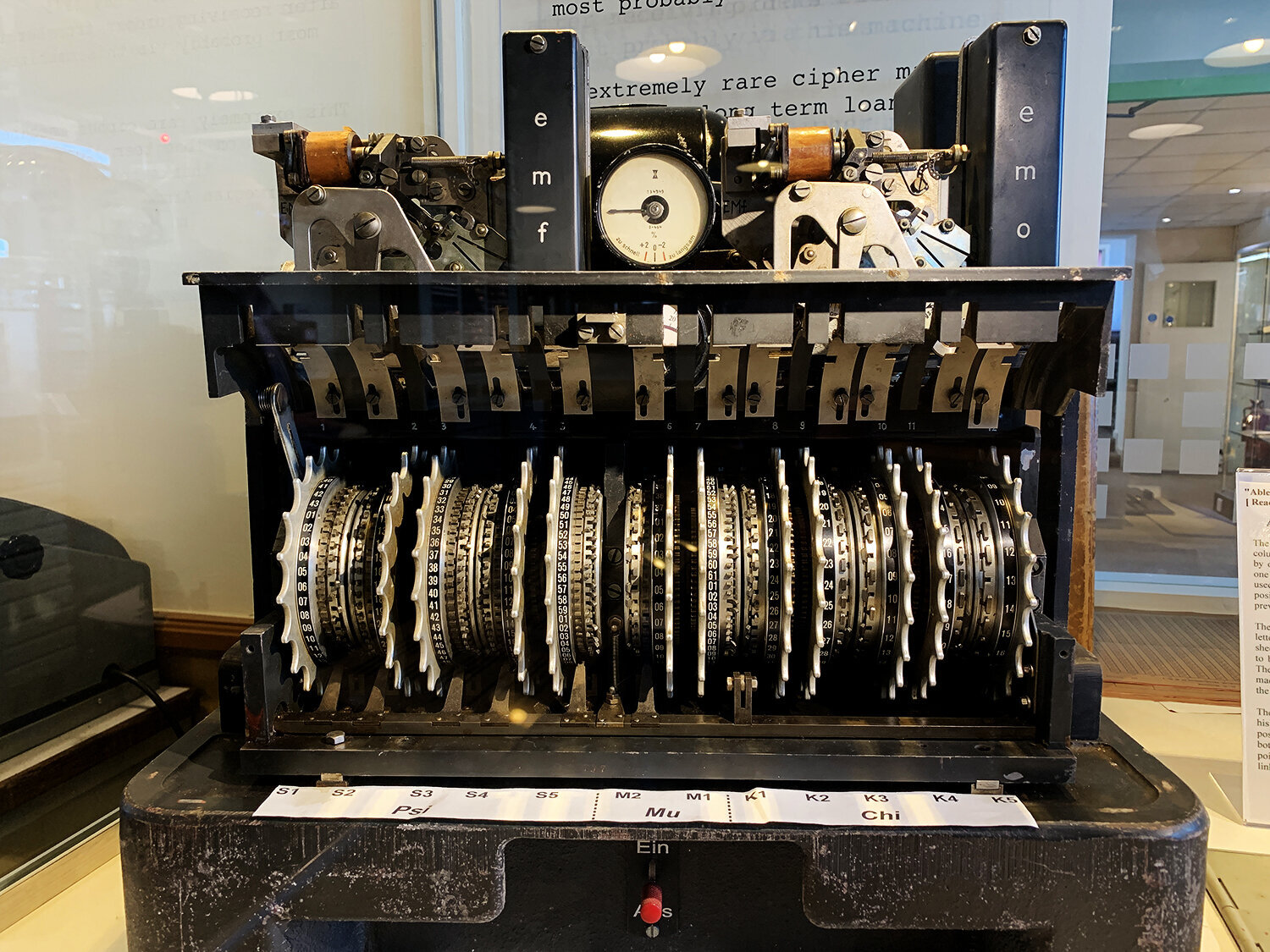Breaking the Code - A Visit to the National Museum of Computing
At 8 am on Friday the 29th, our team scrambled to fit into a luxury bus as we prepared for the two hour drive ahead of us. We were headed to Bletchley Park, with our CEO Matt Thompsett at the wheel. Upon arrival, still bleary-eyed but bursting with excitement, we were given coffee, pastries, and an incredibly interesting lesson about the Lorenz SZ42 - a headfirst introduction to the National Museum of Computing.
The Lorenz SZ42
Used by the German Army during World War II, in particular for communications between German High Command and the Army Commands stationed throughout occupied Europe, the Lorenz was a cipher attachment for teleprinters and implemented a Vernam stream cipher. Not only did we get to see the Lorenz first-hand - one of only a handful ever recovered world-wide - but we also got to watch its arch-nemesis in action: the Colossus.
The Colossus Rebuilt
Designed by a team led by Tommy Flowers and built on the foundations of the cryptographic and mathematical experience and knowledge of Bill Tutte and his team, the Colossus was the ultimate undoing of the Lorenz. By the end of the war, there were a total of 10 machines of this type in use. We heard all about how the Colossus works to decode messages encrypted via the Lorenz, and were told the story of its conception by Phil Hayes, one of the men who helped rebuild the Colossus on display at Bletchley Park.
We were then posed a challenge - to divide into teams and compete to decode a Lorenz-encrypted message by hand, following traditional cryptography techniques of pattern recognition. After much squinting and scribbling on paper, the team composed of our CEO Matt, Programme Manager Rob and developers Evgeni and James took the grand prize. Most of the teams figured it out in the end, with some aspiring codebreakers taking home Phil’s special “hard mode” challenge to decipher.
The most famous piece of wartime decryption machinery was next up on the menu. We had the absolute pleasure of witnessing a demonstration of the Turing-Welchman Bombe Machine. As the accurately reconstructed machine in Block H turned and clicked, we were given a lesson in how it worked, how long it took to decode a message encoded via the world-famous Enigma machine, and just how much dedicated human work went on behind the scenes to make it viable.
The inner workings of the Enigma machine.


After a very replenishing lunch - with vegan and vegetarian options made available for some of our team - we moved on to a tour of some of the more modern machines housed in the National Museum of Computing. We had the pleasure of being shown a material timeline, composed of original devices, of how computers evolved from the exclusive Colossus to the current overwhelming offer and variety of laptops, and we were taught all about memory and data, going from 1 Kilobyte being stored in mercury tubes to 128 Gigabytes stored in a portable USB stick.
edsac_computer_front.jpg
It was a fantastic journey through time and history that helped us better appreciate the amazing technology we have so easily at our disposal today, as well as the brilliant minds that worked towards getting it to us; as fascinating as the evolution of the modern computer can be, it was manpower and human intelligence that made it happen and brought all of society to where it is today.
This is where we picked up with Ms Jacqui Garrad, Museum Director and champion for women and girls in STEM. Apart from being dedicated to showcasing the phenomenal work that women have done within the world of computing over the years, Ms Garrad is also dedicated to a similar cause in the present day - teaching women and girls how to code. With the support of the National Museum of Computing, she hosts GirlsCode MK for free, hoping to encourage more women to bring their brilliance to the world of technology and programming. We have been talking to Ms Garrad and look forward to collaborating with her in the future, as we all share a passion for paving the way to more women in STEM roles, as well as acknowledging the current state of inequality in the industry. If you’re looking, by the way, we are hiring!
After playing around with some retro consoles and early PC games - think more Lemmings, less Pong - as well as trying our hand at Ms Garrad’s “match the woman to the technological accomplishment” challenge, it was time to say goodbye and gear up for the drive back. We gathered our leftovers from lunch and our prizes from the Colossus challenge, said goodbye to the wonderful staff that graced us with their knowledge, zipped up our puffer jackets and settled in our seats.
It was a bittersweet feeling for all of us, as despite spending a whole day at the National Museum of Computing, we still felt like there was much more to be seen, and many more stories to be heard - and we know they are out there, in Bletchley Park. When, we cannot say; but most of us will most definitely be going back for more.






